Methamphetamine, commonly known as meth, is a highly addictive stimulant that can quickly take control of a person’s life. Quitting meth can be extremely challenging, and that’s where withdrawal comes into play. Withdrawal refers to the physical and psychological changes your body and mind experience when you stop using meth after becoming dependent on it.
In this article, we’ll break down meth withdrawal in simple, easy-to-understand terms. You’ll learn about the signs and symptoms you may face during this difficult period. Understanding what to expect is vital—not only for those experiencing withdrawal but also for friends, family members, and healthcare professionals who provide support along the way.
According to a recent study, about 70% of participants reported intense cravings or constant thoughts about meth at the start of the research. This powerful urge to use the drug is one of the most common and challenging symptoms of addiction.






